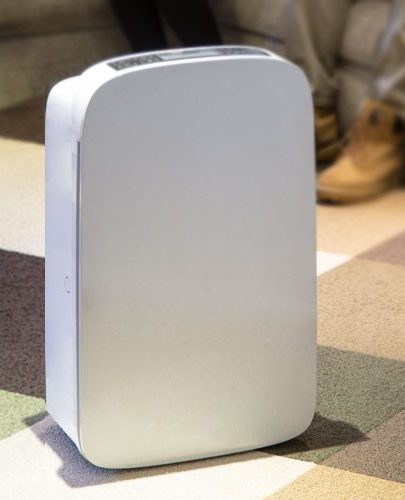How Do Dehumidifiers Work?

Humidity is an enemy to basements, bathrooms, and anything exposed to it. It makes the air feel heavy and damp while helping pests, mold, and stinky smells to flourish. If you feel like throwing in the towel on these problems, we may have a solution for you. Dehumidifiers have long been a friend to homeowners wanting to keep the moisture at bay. Take a seat in science class and learn how dehumidifiers work.
How Do Dehumidifiers Work?
Dehumidifiers work a lot like air conditioners do with a condenser. Warm, damp air is sucked into the dehumidifier and it then makes its way to refrigerated coils which causes the air to condensate in the machine. The condensation from the warm air hitting the cold coils then drips into the appropriate area for disposal. The cooled air is then slightly reheated through the dehumidifier’s motor before its blown back into the room. An air conditioner would instead cool the air before blowing it back out.
Most dehumidifiers come equipped with a humidistat that detects when the room’s humidity rises above the percentage you set it at. Once it’s triggered, it will turn the dehumidifier on and run until the desired humidity level is reached.
Main Dehumidifier Components
Every dehumidifier has a few main parts that drive the rest of the machine. These parts include:
- Compressor: Compresses and expands refrigerant gas to cool the dehumidifier’s coils
- Reheater: Collects the heat that the cooling process generates
- Condensor: Pulls moisture from the air by condensing it
- Reservoir: Collected moisture drips into a designated reservoir to later be drained
Simply dehumidifying makes your home less hospitable to mold, dust mites, and even insects that thrive in moist areas. Using a dehumidifier may also help cut your air conditioning expenses because your unit won’t have to use as much energy to make your home comfortable.
Choosing a Dehumidifier
While there are many criteria to consider when purchasing a dehumidifier, in general the dehumidifier you choose should be specific to the room you need to put it in as some units are more powerful than others. If you’re looking for a basement dehumidifier, you’ll want something that can hold a fair amount of water as well dehumidify a lot of square footage. For a bathroom, a portable dehumidifier might be better.
Something else to consider is how energy efficient you need your unit to be. If you don’t want it to run all day, then a dehumidifier with a humidistat is a good investment. As we mentioned previously, the humidistat controls when the dehumidifier turns on and off based on the air’s humidity.
Guide to Dehumidifiers
Our helpful dehumidifier guide provides everything you need to know about dehumidifiers in a question and answer format. We encourage you to do your research when selecting a unit for your home as it’s a large purchase. For any questions, feel free to get in touch with our experts where they can guide you through our best-selling dehumidifiers.



